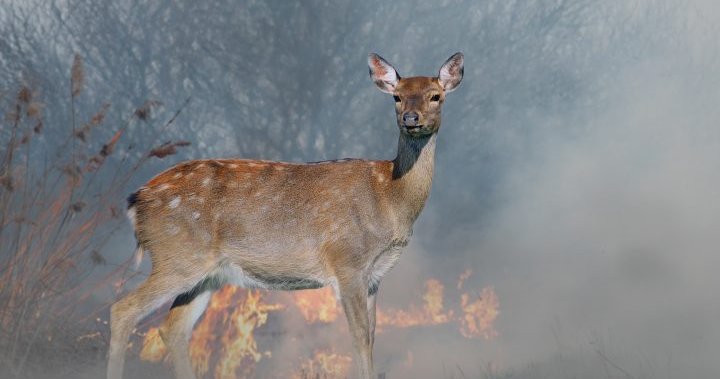
B.C. deers proven as stressed during wildfires through poop: researchers
Global News
Proof that deer experienced elevated stress in response to wildfires in British Columbia's southern Interior can be found in their poop.
Proof that deer experienced elevated stress in response to wildfires in British Columbia’s southern Interior can be found in their feces, say researchers, although researchers say there’s still much to learn about what increasingly severe blazes mean for wildlife.
Shaun Freeman, a wildlife and habitat biologist with the Skeetchestn First Nation, said his team began gathering mule deer pellets in August 2021, while two large fires were still burning in the area between Cache Creek and Kamloops, B.C.
The samples were sent to the Toronto Zoo, where testing revealed elevated concentrations of the stress-induced hormone cortisol.
Stress can affect the animals’ nutritional uptake, causing them to burn precious fat stores, and it can decrease their ability to produce offspring, Freeman said.
Cortisol levels have since dropped by around half in samples taken during more favourable conditions, he said, allowing the researchers to establish a baseline.
But the local mule deer population has been declining, and the Sparks Lake and Tremont Creek wildfires that together spanned 1,595 square kilometres scorched half of the animals’ key winter habitat in Skeetchestn territory, Freeman said.
The winter range has mature old-growth conifers, which help deer move through the forest by shielding the ground from deep snowfall. The trees’ needles and arboreal lichens also provide food during the sparse winter months, he explained.
Swathes of forests burned by the 2021 wildfires have shifted to the kind of habitat that deer would forage in during the summer, he said.





















 Run 3 Space | Play Space Running Game
Run 3 Space | Play Space Running Game Traffic Jam 3D | Online Racing Game
Traffic Jam 3D | Online Racing Game Duck Hunt | Play Old Classic Game
Duck Hunt | Play Old Classic Game











